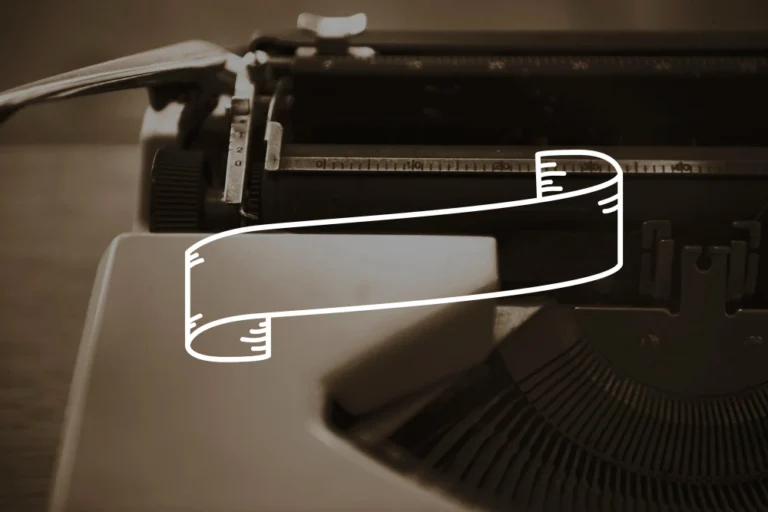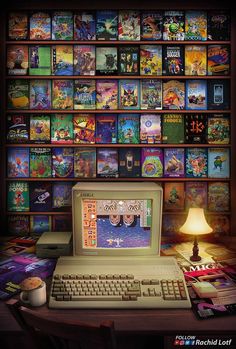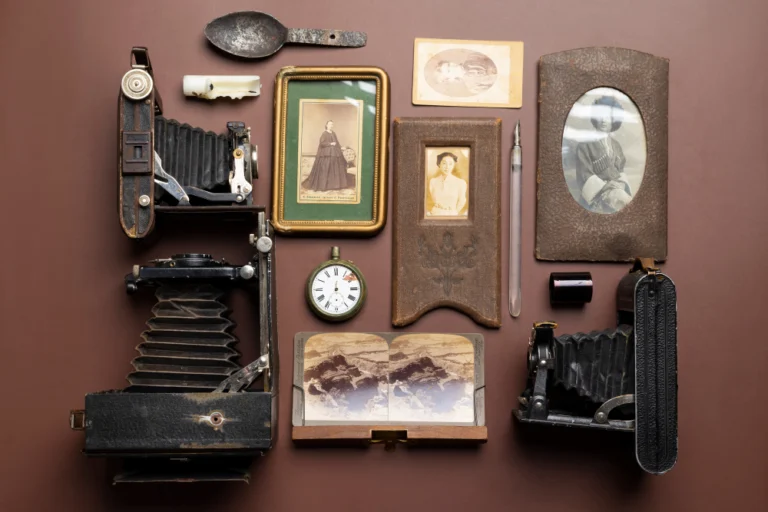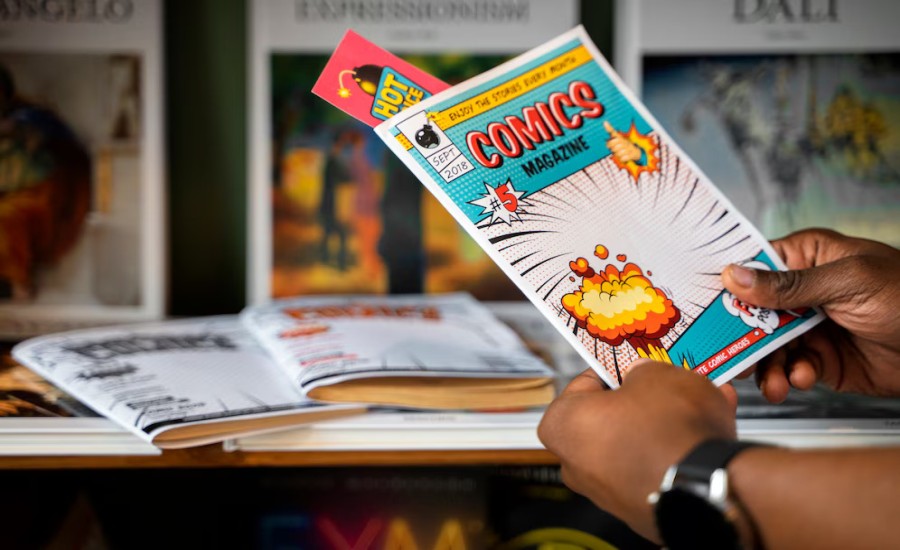
Imagine it’s the 1980s or early 90s. There are no instant tech news websites, no YouTube reviews, no Stack Overflow. Getting information about the rapidly evolving world of personal computers means a trip to the newsstand or eagerly awaiting the postman. The Forgotten Tech Magazines History tells the story of the unsung pioneers who shaped the digital age long before the internet took over. These vintage publications were more than just paper—they were hubs of innovation, community, and inspiration.
You get your hands on the latest issue of BYTE or, here in India, perhaps an early copy of PCQuest or Dataquest. It feels substantial, thick with pages dense with code listings, hardware deep-dives, insightful reviews, and advertisements for gadgets that seem impossibly futuristic (or laughably ancient now). You devour it cover to cover.
This monthly ritual isn’t just casual reading; it’s your primary connection to a global revolution, your guide through the complex landscape of circuits, software, and silicon. These print magazines weren’t just reporting on technology; they were actively shaping its culture and empowering its users. Many are now gone or exist only as digital echoes, but let’s boot up our memories and explore these forgotten print pioneers.
The Foundational Folios (70s/Early 80s): “Code, Circuits & Creativity”

In the era of kit computers and the dawn of the microcomputer, the first tech magazines catered to the pioneers – the engineers, programmers, and dedicated hobbyists building and understanding these machines from the ground up.
Pioneer Spotlight: BYTE (Launched 1975)
- What it was: Widely regarded as the premier, most influential microcomputer magazine of its time, known for its technical depth and wide-ranging coverage.
- Who made it: Founded by Wayne Green (though put in his ex-wife Virginia Londner Green’s name due to IRS issues!), with Carl Helmers as a key early editor. Later acquired by McGraw-Hill.
- Why it mattered: BYTE wasn’t aimed at casual users; it dove deep. It published detailed articles on hardware design, programming languages (Tiny C, BASIC), operating systems (CP/M), and algorithms. It was where Xerox PARC chose to publicize Smalltalk in 1981. For serious enthusiasts and professionals globally, BYTE was the essential monthly read to understand how computers worked, not just what they did. Its distinctive illustrated covers by Robert Tinney also gave it a unique visual identity.
- Why it faded from print: Print publication ceased in 1998. While it continued online for a while, the rise of specialized websites, instant news, and online developer communities eroded its unique position as the central hub for deep technical information. The internet offered immediacy and interaction that a monthly print journal couldn’t match.
- Legacy: Set the standard for in-depth technical computer journalism. Its archives are a crucial resource for understanding the early microcomputer era. Many influential tech writers contributed to its pages.
Pioneer Spotlight: Creative Computing (1974-1985)
- What it was: One of the earliest magazines focused on the hobbyist, educational, and recreational aspects of personal computing.
- Who made it: Founded by David H. Ahl, who previously worked at Digital Equipment Corporation (DEC) and published the hit book 101 BASIC Computer Games.
- Why it mattered: Unlike the highly technical BYTE, Creative Computing aimed for accessibility and fun. It published numerous game listings (often in BASIC for users to type in), educational software reviews, articles on creative applications (like computer art and music), and explored the social impact of computers. It catered to the growing number of home and school users, making computing seem less intimidating and more engaging.
- Why it faded from print: The home computer market fragmented in the mid-80s, and competition from platform-specific magazines grew. Ziff-Davis acquired it in the early 80s but ultimately ceased publication in December 1985.
- Legacy: Hugely influential in promoting personal computers for education and recreation. Its collections of BASIC games inspired countless budding programmers. Helped foster a more playful and accessible computer culture.
Parallel Developments (70s – Early 80s)
- Microcomputer kits (Altair 8800) launch the hobbyist boom.
- Pre-assembled personal computers (Apple II, TRS-80, Commodore PET) arrive.
- CP/M becomes an early standard OS. IBM PC launches (1981).
User Experience Snapshot
Reading BYTE felt like attending a graduate seminar – dense, challenging, but rewarding for the dedicated. Creative Computing was more like a fun workshop, encouraging experimentation and play. For early adopters, these magazines were indispensable guides and sources of community in a field that barely existed outside university labs and enthusiast clubs.
The Platform Press & Programming Power (80s/Early 90s): “Code on the Page”
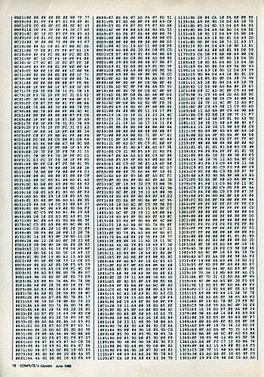
As specific home computers gained mass popularity, dedicated magazines emerged, often becoming essential resources for owners of those particular machines. A key feature of many was the type-in program.
Pioneer Spotlight: Compute! (1979-1994)
- What it was: A highly popular American home computer magazine known for covering multiple platforms (Commodore, Atari, Apple, IBM PC) and especially for publishing numerous type-in programs.
- Who made it: Founded by Robert Lock’s Small System Services, later acquired by ABC Publishing.
- Why it mattered: In an era before easy software distribution, Compute! provided readers with actual software – games, utilities, educational tools – printed as lines of BASIC or machine code data statements. Readers would spend hours meticulously typing these listings into their computers. Specialized utilities like “MLX” were provided to help enter machine code with checksums to catch errors. For many, Compute! was a primary source of new software for their machines. It also featured hardware reviews, tutorials, and columns by figures like Jim Butterfield and Orson Scott Card.
- Why it faded from print: As software became more complex, type-in programs became impractically long. The rise of affordable commercial software, shareware distributed via BBSs/online services, and eventually cover disks/CDs made type-ins obsolete. The magazine ceased publication in 1994.
- Legacy: Taught countless users basic programming concepts through typing and debugging listings. Provided a vast library of free (if labor-intensive) software. Embodied the hands-on, do-it-yourself spirit of early home computing.
Pioneer Spotlight: Dr. Dobb’s Journal (DDJ) (1976-2009 print)
- What it was: The premier magazine for serious software developers and programmers.
- Who made it: Started by the People’s Computer Company (Dennis Allison, Bob Albrecht), later published by various companies including UBM.
- Why it mattered: DDJ focused on the craft of programming. It published deep dives into algorithms, operating system internals, programming languages, and software tools. It famously published the source code for influential projects like the Tiny BASIC interpreter and the Small-C compiler. It was a forum for sharing advanced techniques and fostering a high-level programming community long before the internet made such sharing easy. Contributors included legends like Gary Kildall (creator of CP/M) and Steve Wozniak.
- Why it faded from print: Like BYTE, the internet provided faster access to technical information, code repositories (like GitHub), Q&A sites (Stack Overflow), and online developer communities. The niche for a monthly print journal of software tools diminished. Print ceased in 2009, with the website continuing for a few more years before closing.
- Legacy: An essential resource for generations of programmers. Championed software sharing and technical excellence. Its archives document the evolution of software development techniques.
Parallel Developments (80s – Early 90s)
- 8-bit home computer wars (Commodore 64 vs. Spectrum vs. Atari vs. Apple II).
- Rise of IBM PC compatibles. MS-DOS becomes standard.
- Early online services (CompuServe, GEnie) and BBSs grow.
- Software development tools mature, but distribution remains challenging.
User Experience Snapshot
The painstaking process of typing hundreds of lines of BASIC code from Compute!, debugging typos, and finally seeing a game spring to life. Or tackling a complex algorithm explained in Dr. Dobb’s, feeling part of an elite community pushing the boundaries of software. These magazines demanded active participation from their readers.
The PC Powerhouses (Late 80s / 90s / Early 00s – Global & India): “Covering the Revolution”
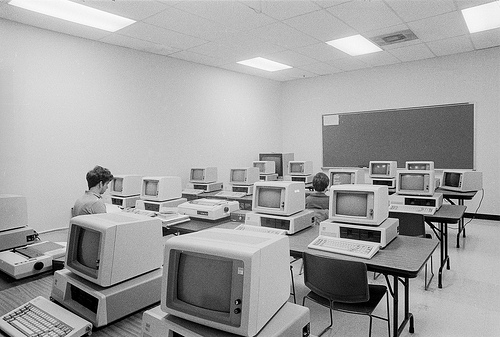
As the IBM PC compatible platform running DOS and then Windows became dominant, a new wave of magazines emerged to cover this ecosystem, including influential titles both globally and specifically within the rapidly growing Indian market.
Global Giants (Selection):
- InfoWorld (Launched 1978, print ended 2007): Evolved into a key source of IT industry news, enterprise product reviews, and analysis for professionals. Its Test Center reviews were highly respected. Famous for the insightful (and often gossipy) Silicon Valley column by “Robert X. Cringely.” Pivoted to web-only in 2007.
- Computer Shopper (US, 1979-2009 print): Less a traditional magazine, more a massive (often 800+ pages, phonebook-thick) monthly catalog packed with dense advertisements from mail-order vendors selling PCs, components, peripherals, and software. Essential for price comparison and finding specific parts before online retailers like Newegg or Amazon existed. A nostalgic icon purely for its size and density.
Indian Stalwarts:
- PCQuest (Launched ~1987?): Published by CyberMedia (which also founded Dataquest), PCQuest became arguably India’s most influential hands-on technology magazine. It offered in-depth, practical reviews of hardware and software tailored to the Indian context (price sensitivity, availability), excellent tutorials, troubleshooting guides, and, crucially, its monthly cover CDs/DVDs. These discs were packed with essential shareware, freeware, utilities, game demos, and drivers – often the only practical way for Indian users to access such software before affordable broadband. Its “PCQLinux” initiative also introduced many to Linux. While still online, its print legacy is immense.
- CHIP India (March 1998 – Sept 2013 print): The Indian edition of the technically rigorous German magazine. Like PCQuest, it was hugely popular, respected for its detailed technical articles, hardware benchmarks, DIY projects, and its cover CDs/DVDs, which were a primary reason for purchase. Its closure in 2013 marked the end of an era for many Indian tech enthusiasts. (Its original Indian publisher, Jasubhai, later launched Digit).
- Dataquest (Launched 1982): The flagship publication of CyberMedia group, Dataquest focused specifically on the Indian IT industry. It provided market analysis, policy commentary, interviews with industry leaders, and corporate strategies. Its annual “DQ Top 20” ranking of Indian IT companies became a benchmark. Highly influential among IT professionals, policymakers, and business leaders in India. Still published.
- Digit (Launched June 2001): Arriving later but becoming massively influential in the 2000s, Digit (launched by the former publishers of CHIP India) built on the model of PCQuest and CHIP, known for its thick issues, strong technical content, and especially its feature-packed dual-layer DVDs. It successfully navigated the transition and continues in print and online today, carrying forward the legacy.
Parallel Developments (Late 80s – Early 00s)
- Windows 3.x, 95, 98, XP become dominant PC operating systems.
- The internet and World Wide Web explode globally. E-commerce begins.
- CD-ROM and later DVD drives become standard PC equipment.
- India’s IT services industry begins its rapid ascent. PC penetration grows steadily in India, fueled by business adoption and education, though home access lags initially. Internet cafes boom.
User Experience Snapshot
Thumbing through the hundreds of pages of Computer Shopper looking for the best price on RAM. Relying on InfoWorld or PC Magazine‘s reviews before making a big purchase. In India, eagerly tearing the plastic off the PCQuest or CHIP cover CD, excited to discover the treasures within – maybe a new game demo, a vital utility, or the drivers needed to get a new peripheral working. Reading Dataquest to understand the trajectory of Infosys or Wipro. These magazines were trusted companions through the PC revolution.
Why They Folded (or Faded from Print): “The Digital Deadline”
The golden age of print tech magazines couldn’t last. The very technology they covered ultimately rendered their primary format obsolete.
- The Internet: Provided instant news, breaking stories, rumors, and reviews, making the monthly print cycle seem glacial. Websites, blogs, forums, and later social media offered information faster, often for free, and with more interactivity.
- Digital Distribution: The need for cover discs vanished as software, demos, drivers, and trials became easily downloadable directly from vendors or platforms like Steam. This removed a key value proposition, especially for magazines like PCQuest, CHIP, and Digit in India.
- Advertising Shift: Advertisers migrated their budgets massively from print to online platforms where they could track engagement and target users more effectively. Print ad revenues plummeted.
- Information Accessibility: Vast resources – technical documentation, tutorials, Q&A sites (like Stack Overflow), Wikipedia, YouTube guides – became freely available online, diminishing the magazine’s role as the primary source of knowledge.
- Cost: Printing and distributing thick, glossy magazines, often with expensive covermounts, became economically unsustainable in the face of declining circulation and ad revenue.
Many magazines tried to transition online (InfoWorld, PCMag, PCQuest, Digit, Dataquest survive digitally), while others simply folded (Creative Computing, Compute!, Computer Shopper, CHIP India print edition, Dr. Dobb’s print edition).
Full Circle Reflections
Before our screens were flooded with infinite feeds and instant answers, the arrival of a monthly computer magazine was an event. Titles like BYTE, Creative Computing, Compute!, InfoWorld, Dr. Dobb’s, Computer Shopper, and Indian powerhouses PCQuest, CHIP, Dataquest, and Digit were more than just paper and ink.
They were our guides, our educators, our communities, and often, our software suppliers. They meticulously documented the birth and explosive growth of the personal computer and internet revolutions, translating complex technology into accessible knowledge and fostering a generation of enthusiasts and professionals.
They taught us to code with type-in listings, guided our purchases with rigorous reviews, provided essential tools on cover discs, and connected us through letters pages long before online forums. The internet, the very technology they championed, ultimately led to the decline of their print dominance.
Yet, their legacy endures. They set the standards for tech journalism, nurtured communities, and left behind invaluable archives that tell the story of how our digital world was built, one issue, one line of code, one cover disc at a time. These forgotten pioneers of print may be gathering dust, but the industry they shaped stands tall.
The Heritage Impact: Setting the Tech Agenda
These magazines left a lasting imprint:
- Shaped Tech Culture: Fostered communities of enthusiasts, programmers, and IT professionals.
- Influenced Purchasing: Their reviews and benchmarks guided consumer and business tech adoption for decades.
- Distributed Software: Type-in programs and especially cover discs were crucial distribution channels before broadband.
- Educated Users: Provided tutorials, technical deep-dives, and practical advice, increasing digital literacy.
- Chronicled History: Serve as invaluable historical records of the fast-paced evolution of hardware, software, and the industry itself.
- Launched Careers: Many prominent tech journalists, editors, and even developers got their start at these publications.
They were the essential scrolls of the digital age, and their influence remains woven into the fabric of technology today.
FAQ: Pages from Tech History
-
What were some globally influential early computer magazines?
BYTE (for technical depth), Creative Computing (for hobbyists/education), InfoWorld (for industry news and reviews), Compute! (for type-in programs), Dr. Dobb’s Journal (for programmers), and the massive Computer Shopper (for mail-order) were all highly influential in their time.
-
What were some popular and influential tech magazines in India?
PCQuest and CHIP India were extremely popular among enthusiasts and professionals for their reviews, guides, and essential cover CDs/DVDs. Dataquest was (and is) a leading publication focused on the Indian IT industry. Digit emerged later but became very significant, known for its packed cover DVDs.
-
Why were cover discs/DVDs so important, especially in India?
Before widespread and affordable broadband internet, cover discs were often the only practical way for users to get large amounts of software, including game demos, essential utilities, drivers, shareware, and even operating systems like Linux distributions. They offered tremendous value for the magazine’s price.
-
Why did most print computer magazines decline or stop printing?
The primary reason was the rise of the internet, which offered faster news, readily available reviews and technical information (often free), online forums for community interaction, and easy digital software distribution, undermining the core value propositions of monthly print magazines and their cover discs. Declining print advertising revenue was also a major factor.
-
Are any of these old tech magazines still available?
Many have ceased publication entirely (Creative Computing, Compute!, Computer Shopper print, CHIP India print, Dr. Dobb’s print). Some survive as online-only publications (InfoWorld, PCMag). Others, like Dataquest and Digit in India, continue to have both print and online presences, though the focus has shifted significantly towards digital. Archives of many old magazines can often be found on sites like the Internet Archive.
